Top 10 Strange Mass Animal Deaths
Source: http://www.time.com/time/specials/packages/article/0,28804,2040762_2040769_2040801,00.html?hpt=C2
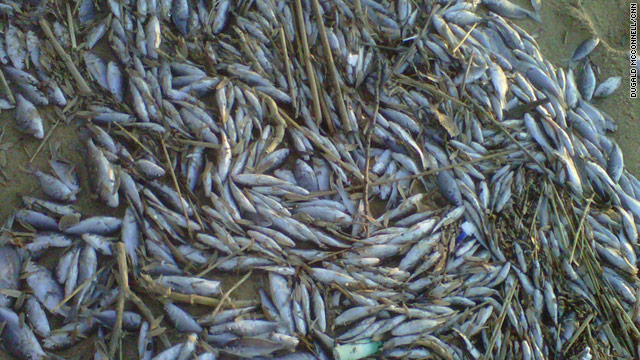 |
2 million fish found dead in Maryland – Authorities in Maryland are investigating the deaths of about 2 million fish in Chesapeake Bay. “Natural causes appear to be the reason,” the Maryland Department of the Environment said in a news release. “Cold water stress exacerbated by a large population of the affected species (juvenile spot fish) appears to be the cause of the kill.” The investigation comes days after the deaths of an estimated 100,000 fish in northwest Arkansas. “The affected fish are almost exclusively juvenile spot fish, 3 to 6 inches in length,” the Maryland department said. A recent survey “showed a very strong population of spot in the bay this year. An increased juvenile population and limited deep water habitat would likely compound the effects of cold water stress.” Large winter kills of spot fish have occurred at least twice before in the state, in 1976 and 1980, the department said. |
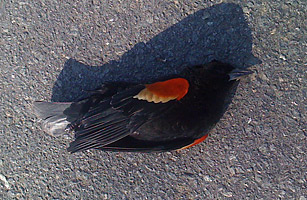 |
Some residents in an Arkansas town must have felt transported to an earlier age of superstition when, over the first weekend of the new year, thousands of red-winged blackbirds fell dead from the sky. Like a grim omen, the same phenomenon occurred two days later, with some 500 blackbirds dropping dead in Louisiana. Scientists have puzzled over what killed them, ruling out disease or some form of poisoning. Instead, initial autopsies revealed internal trauma and hemorrhaging, possibly as a result of some violent midair collision among the blackbirds, who tend to fly in very tight formations. They could have also been disoriented by a passing thunderstorm and waterlogged by its rainfall. In any event, EPA officials swiftly arrived on the scene, wearing gas masks and fully covered in hazmat gear while cleaning away the corpses. These blackbirds certainly won’t be baked in a pie. |
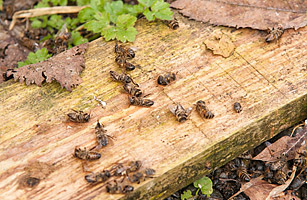 |
It started in 2006. Scores of honeybees began dying for seemingly no reason, prompting scientists to come up with the term “colony collapse disorder.” According to the Department of Agriculture, reported bee-colony death rates in the U.S. were 29% in 2009, rising to 34% in 2010. And although a handful of plausible explanations have been offered fungal infection, pesticides, climate change no one really knows why they’re dying. But it’s not just honeybees: a recent study by the University of Illinois suggests that the four main types of bumblebee populations have plummeted more than 90% in the past 20 years. |
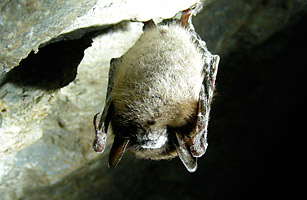 |
A mysterious fungal disease has been killing bats across the U.S. since the first cases were reported in New York in 2006. More than 1 million bats have died in the 14 states and two Canadian provinces where the so-called white-nose syndrome has been identified in the nocturnal mammals. The fungus itself doesn’t kill the creatures, but rather attacks the hibernating animals on their mouth and nose and prevents them from sleeping. When they are aroused from their slumber, the bats leave their caves for food and burn up body-fat reserves, eventually freezing or starving to death. Wildlife commissions across the nation have ordered the closure of hundreds of caves and abandoned mines until a source of the disease and a possible cure or treatment can be identified. |
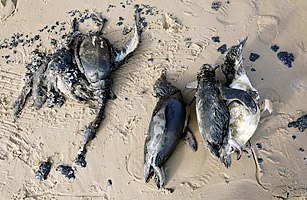 |
Over the course of two months in 2009, millions of sardines, thousands of flamingos, hundreds of penguins and nearly 60 pelicans died in seemingly unrelated incidents. First, it was the penguins. About 1,200 were found dead in late March on a remote beach in southern Chile. Next, in April, millions of sardines washed ashore nearby. Then thousands of the rare Andean flamingo abandoned their nests in the north of Chile, leaving their 2,000 chicks to die in their shells. Lastly, in late May, nearly 60 pelicans were found dead on the South American nation’s central coast. What’s worse, no one could say concretely why these animals had died. While some pointed to global warming, overfishing, pollution or disease, most blamed Chile’s especially dry and hot 2009 summer. |
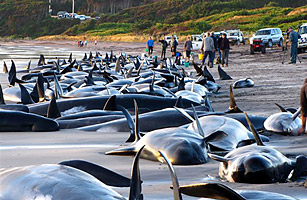 |
In late 2008, 60 pilot whales beached themselves along the rocky coast of the southern Australian island state of Tasmania. A week later, 150 long-finned pilot whales did the same. Then, in early January 2009, 45 sperm whales perished when they stranded themselves on a Tasmanian sandbar. And, lastly, in the most egregious in the string of incidents, 194 pilot whales and a handful of bottleneck dolphins beached themselves along the same coastline in March. By the time officials arrived at the scene, 140 were dead. Using stretchers, small boats and jet skis, more than 100 volunteers managed to save 54. But with four beaching incidents in as many months, scientists found themselves at a loss to explain why the majestic mammals had gone ashore. |
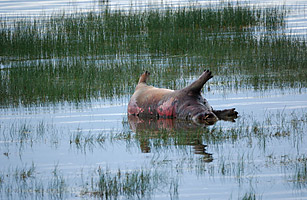 |
In 2004, an estimated 300 hippopotamuses in Uganda’s Queen Elizabeth National Park died after drinking water contaminated with anthrax. The lethal bacteria can frequently be found in the pools of stagnant water that form during Uganda’s dry season. The country has suffered from occasional anthrax outbreaks since the 1950s and because of their semiaquatic nature, hippos are particularly vulnerable to contamination. That’s probably why a massive kill happened again in June 2010, when 82 hippos and nine buffalo died after drinking water from Kazinga Channel, which links Lake Edward and Lake George, also in the Queen Elizabeth National Park. |
 |
Legend has it that in 1754 in the hamlet of Windham in the Connecticut colony, the Battle of the Frogs commenced. No, we’re not talking about the French. It was literally a battle pitting frog against frog. At the time, a number of men in the area had departed to fight the French and the Indians. One hot night in June, the remaining men in the town heard screeching and began to fire wildly, believing they were under attack. The next morning they discovered that the sounds had come from frogs that were either battling over the last remnants of water in a drought-stricken pond or just ticked off at each other. They never really knew why the whole episode occurred, but hundreds, some said thousands, of frogs died. |
 |
They crashed into cars and boats, huddled in yards and were struck by vehicles. Hundreds of pelicans from Oregon to Mexico were found either acting funny or dead in 2009, and no one was really sure why. Rescuers speculated that the odd behavior was possibly an illness caused by a virus or contaminants washed into the ocean after forest fires in Southern California. Another theory was that unseasonable weather patterns threw off the birds’ eating habits, causing them to act disoriented. |
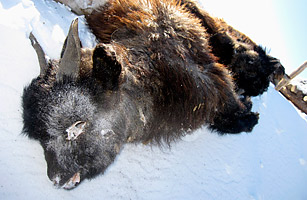 |
In early 2010, a bitterly cold and snowy winter followed a summer drought, preventing many species in Mongolia from grazing adequately. The disaster, which Mongolians called a zud (this one was particularly devastating, but they are an all too common phenomenon), resulted in the deaths of millions of camels, goats, sheep, cows, yaks and horses. The U.N. even started a program to pay herders to clear the animal carcasses. The deaths were tragic enough, but in a country where much of the population depends on herding livestock, the disaster also threatened the livelihood of the area’s humans. |
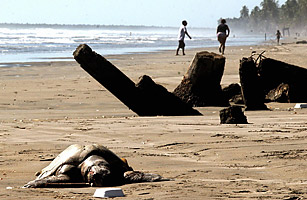 |
As the bodies of several species of endangered sea turtles washed up on the shores of El Salvador in January 2006, the circumstances of their deaths appeared mysterious. The Wildlife Conservation Society later said the sea turtles, some 200 of them, were the victims of red tide, toxic algal blooms that had killed before. |



